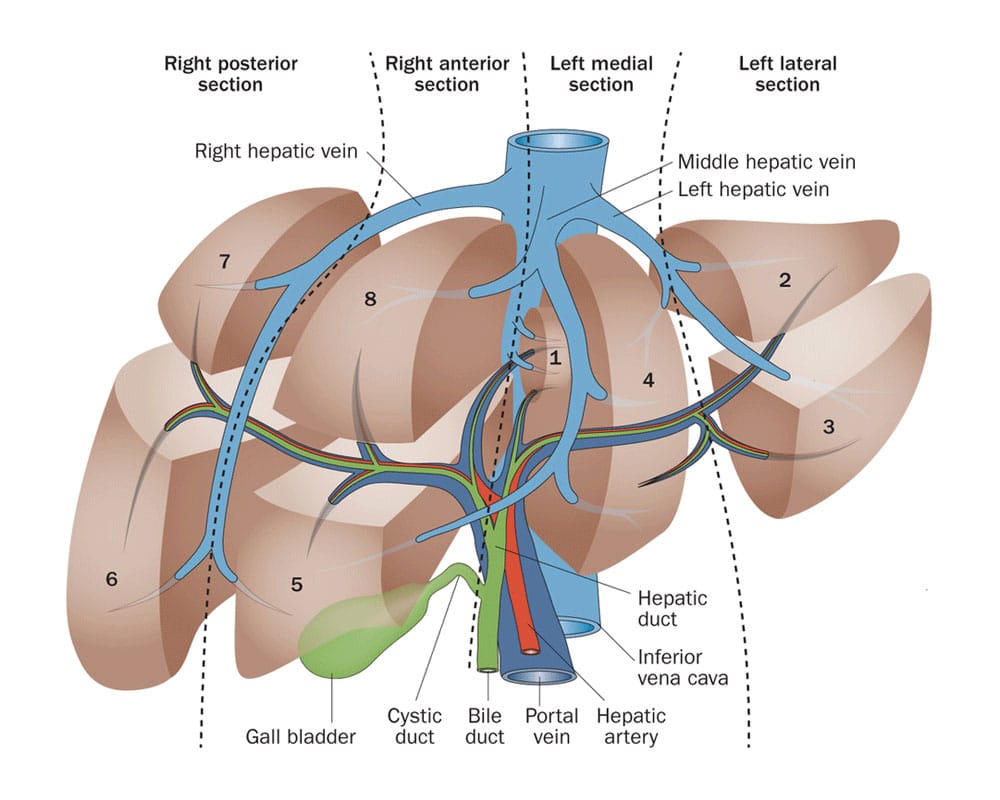Anatomy
The liver is the second largest organ (after the skin) in the human body and the largest gland (weighing an average of 1500 g). It lies under the diaphragm in the right upper abdomen and mid abdomen and extends to the left upper abdomen.
It divides into right (60%) and left lobes (40%) by a major fissure, Cantlie’s line including 8 segments. The right lobe includes segment 5,6,7 and 8. The left lobe includes segment 2,3 and 4. The right and left lobes are further divided into sections: right anterior (segment 5, 8), right posterior (segment 6,7), left lateral (segment 2,3) and left medial (segment 4) sections. Segment 1 is called the caudate lobe, which has separate blood supply and drainage.
The liver has dual blood supply from the portal vein and the hepatic artery and its venous drainage is by the hepatic vein. Each segment has separate inflow of the portal vein, hepatic artery and bile duct.
Physiology
The liver regulates most chemical levels in the blood and excretes a product called bile. Bile helps to break down fats, preparing them for further digestion and absorption. All of the blood leaving the stomach and intestines passes through the liver. The liver processes this blood and breaks down, balances, and creates nutrients for the body to use. It also metabolises drugs in the blood into forms that are easier for the body to use. Many vital functions have been identified with the liver.
The liver has the unique ability to regenerate following a surgical resection after a short period of time. This enables surgeons to perform liver resections up to 70-75% of liver volume in patients with healthy liver parenchyma.
Learn more about the liver, including:
